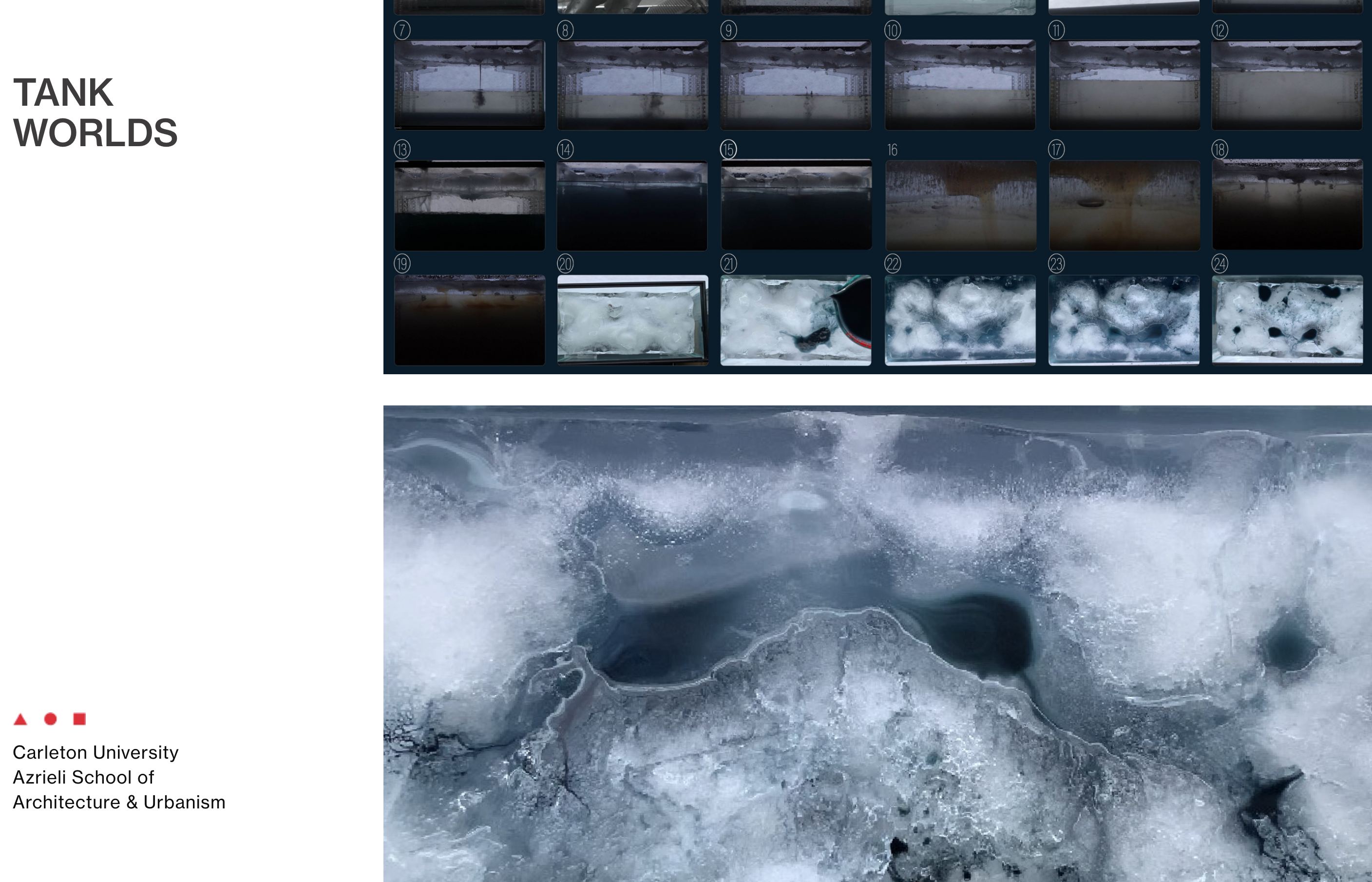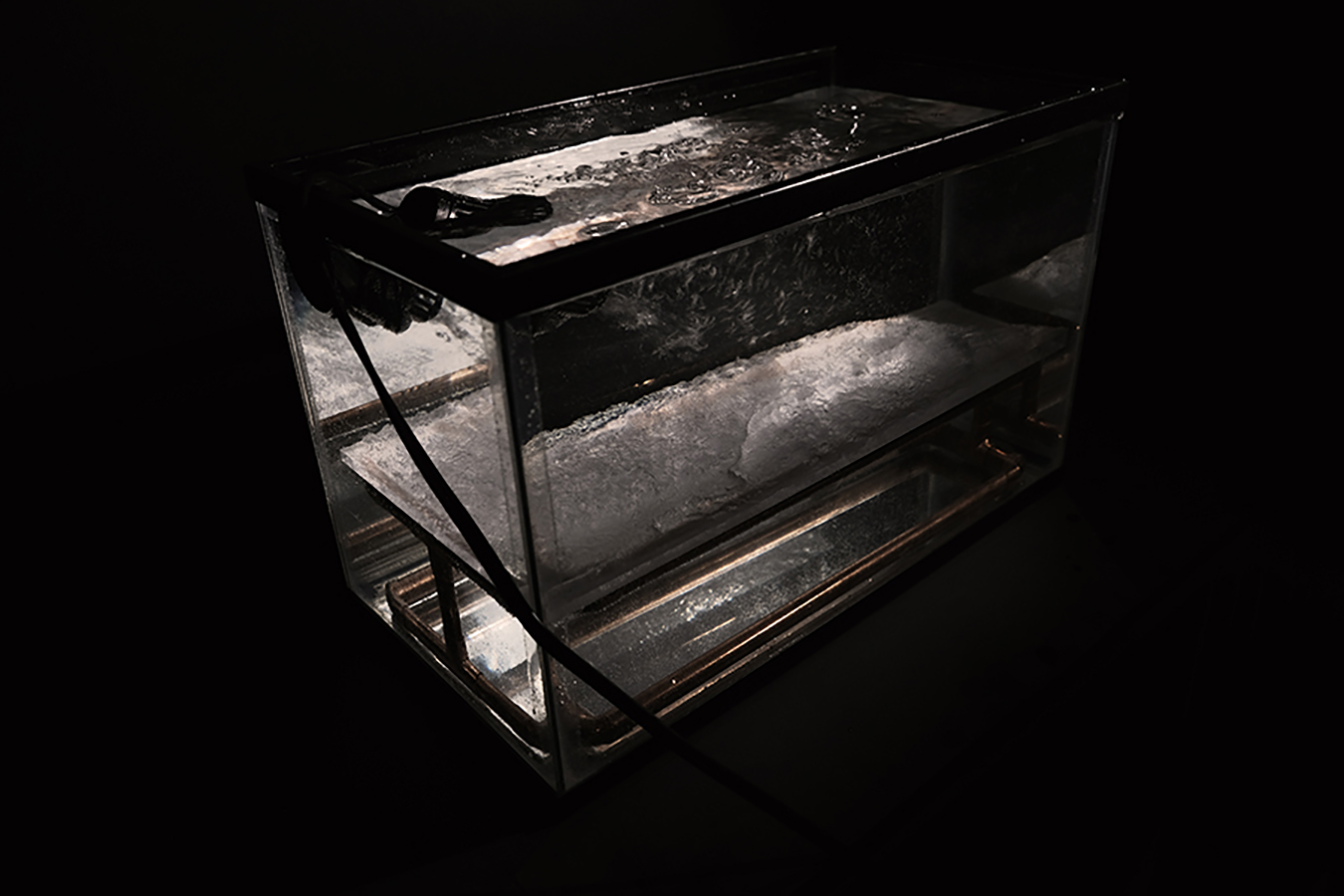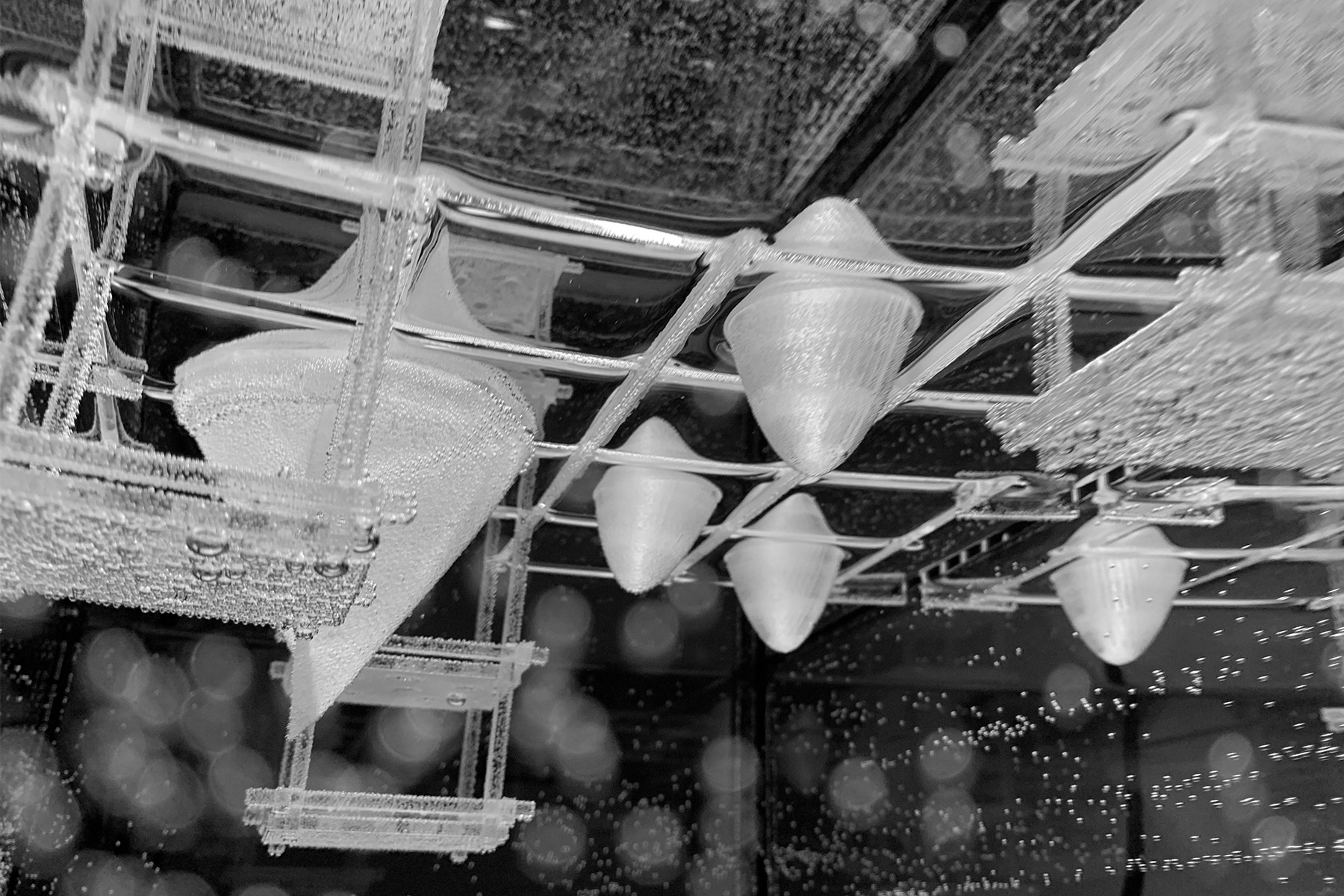Tank Worlds: Thesis Seminar + Design Studio

Fourth Year Undergraduate Design Studio / 2021 Carleton University
Image: https://tankworlds.cargo.site/
Tank Worlds are environmental models from two Winter 2021 courses at Carleton University: a thesis seminar titled ‘Miniaturising the Gigantic’ and a fourth year undergraduate studio titled ‘Tank Worlds: Hamilton Harbour‘. The two courses had differing structures and goals, but they shared a common mode of exploration: the construction of physical models within tanks of water. Tanks of water offer spaces of speculation about immersion in atmospheric and hydrological environments, engaging with the questions of scale, time, and materiality. They combine traditions of engineering experimentation within tanks of water to test principles of building ventilation with theoretical ideas of ‘worlding,’ or designing microcosms as devices of future-speculation.

Image: Shaylyn Kelly, Miniaturising the DMZ
Thesis Seminar: Miniaturising the Gigantic
This hybrid seminar/workshop grappled–through reading, discussion, and making–with the question: what are the implications of miniaturising (through architectural representation) the gigantic environmental domains affected by climate change? The course looked at a range of representational approaches by architects, architectural historians, natural scientists, building scientists, landscape architects and visual artists from the late nineteenth century to the present. Students constructed their own miniatures of the gigantic: ‘tank-world’ models that position their thesis projects within a contemporary critical environmental context. The course was structured around a focused reading of a single environmental model within its particular disciplinary, historic, and methodological contexts. Through these readings and models, we accrued a range of vantage points for thinking about scale, representation, human agency, materiality, and modes of architectural speculation for designing in light of climate change.

Image: Brandon Todd, Birds: Agents of Change
Design Studio: Tank Worlds: Hamilton Harbour
Hamilton harbour is a so-called ‘ecological dead-zone’ of floating coal-tar blobs, soils contaminated with heavy metals, and a skyline of active polluting smokestacks. In 1987, the area adjacent to the Stelco steel mills was designated as one of Canada’s twelve Great Lakes ‘Areas of Concern’ by Canada’s Ministry of Environment. It is the largest site of freshwater sediment contamination in Canada and is currently undergoing a large-scale civil engineering dredging containment project intended to sequester and eventually cap contaminants.
Using tank-world models, mappings reliant on satellite imagery, and video, students designed an alternate, possible future for a portion of the Hamilton harbour.
In the tanks, water represented both water and air; ground was constructed within and upon this shifting medium. Oil, dye, sand, and other particulates simulated airborne pollutants as well as contaminated soil and sediment. Architectural models / instruments/ infrastructures made of plexiglass, steel, plaster, and other materials were suspended within, rest upon, or sank into this fluid environment. Components dredged, contained, filtered, and sequestered contaminants, acting as instruments, infrastructures, and architectures of remediation, tending and caring for the site as it recovers over time. Completed Winter 2021, the studio foregrounded working materially to offset the digital monotony of online learning.